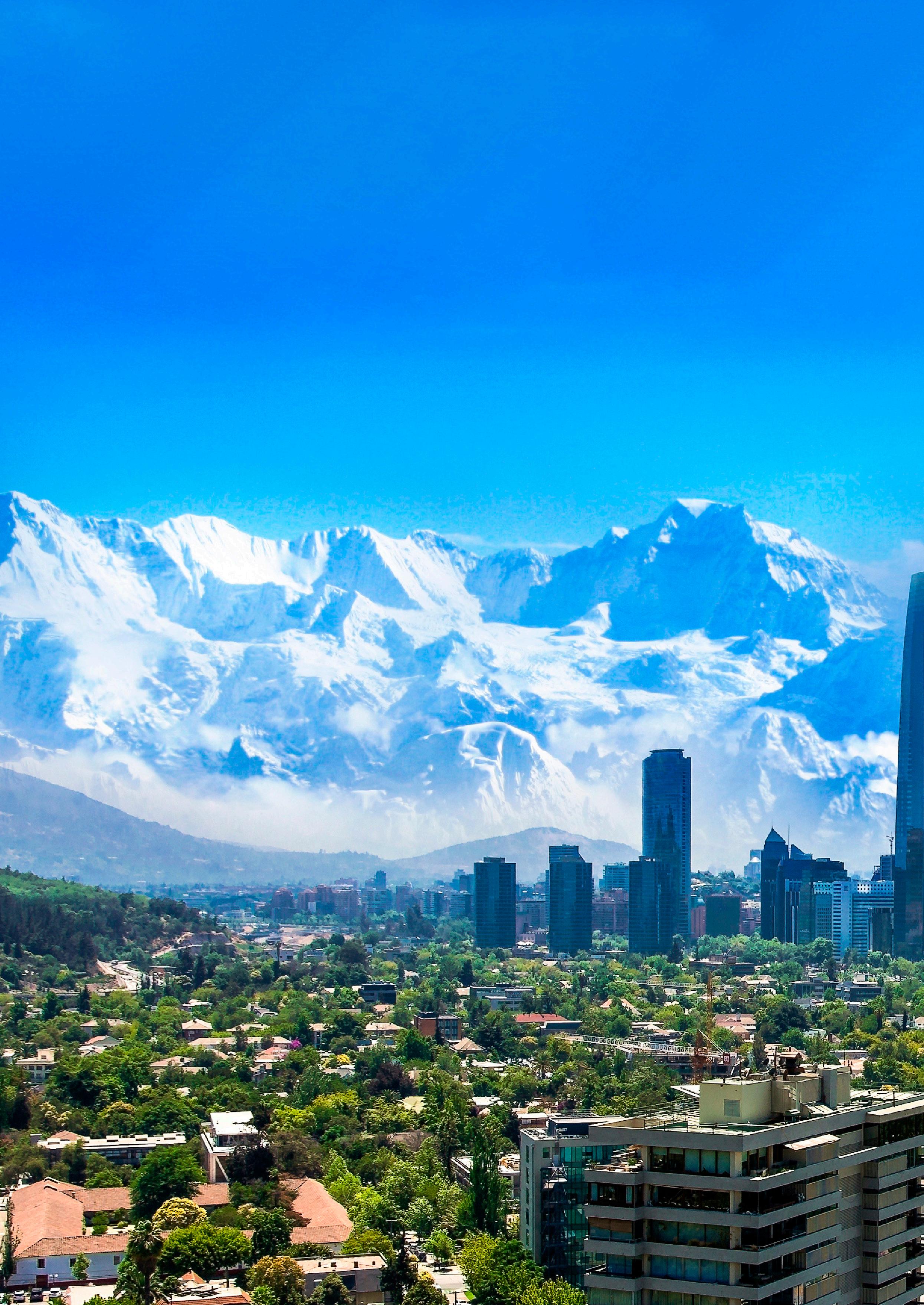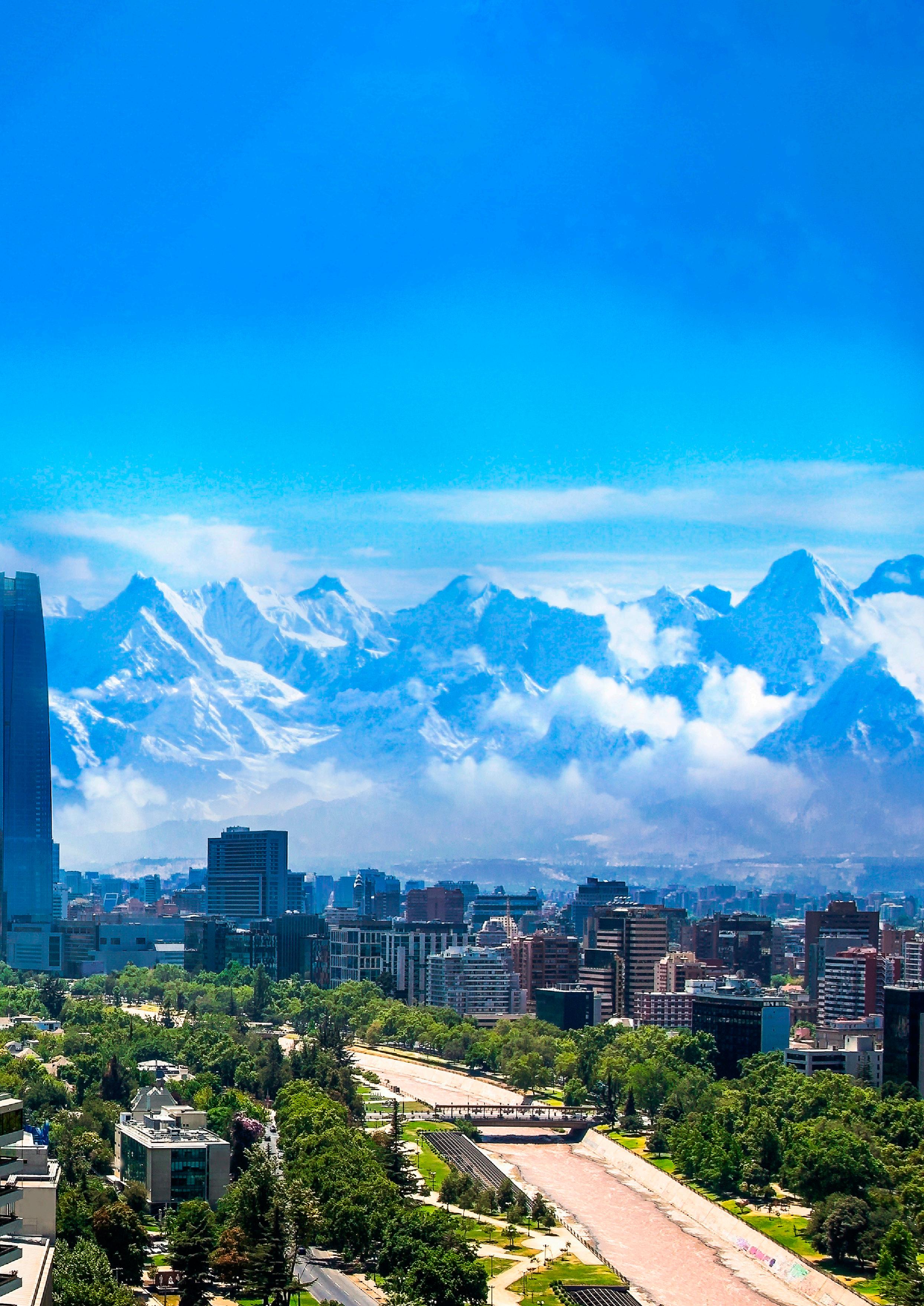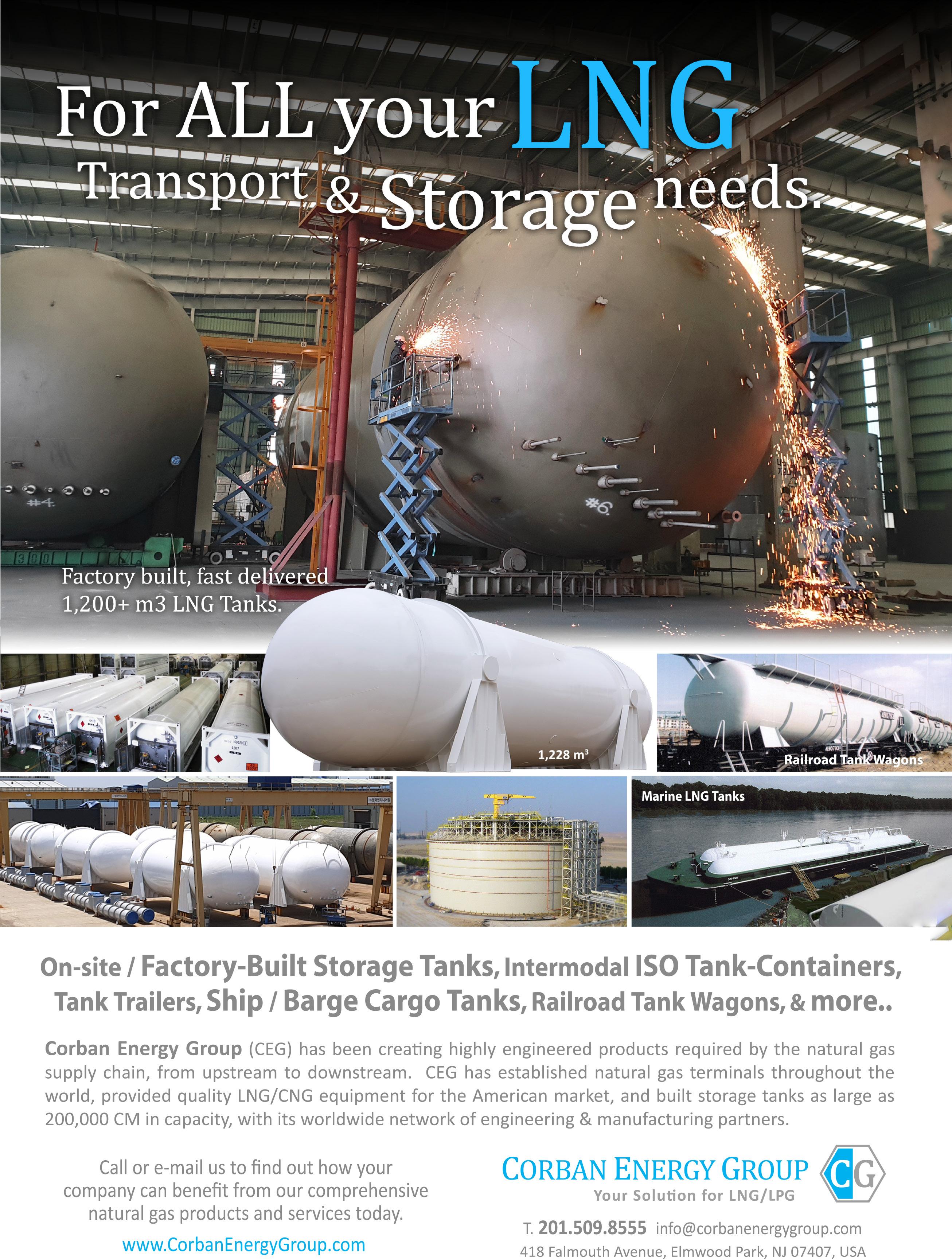
8 minute read
It's all to play for in Latin America
Alvaro Rios Roca, Gas Energy Latin America, the Southern Cone, analyses the current state of LNG in Latin America, providing insight on the region’s market complexities as well as its opportunities for growth.
ountries in Central America and the Caribbean will require relatively small amounts of LNG, with more FSRUs being installed parallel to those in the Dominican Republic, Panama, and El Salvador. These countries need natural gas, which they do not produce, to support hydropower, wind power, solar power, and to displace coal and heavy diesel generation in industry and power generation. Gas Energy Latin America (GELA) predicts that small LNG will continue to be deployed throughout the islands and in all Central American countries from the large FSRU terminals already installed. On 2 April 2022, El Salvador became one of the LNG importing countries in the region with the purchase and arrival of its inaugural cargo at Shell’s Bilbao Knutsen. The cargo was transferred to the BW Tatiana FSRU, a conversion of Shell’s former Moss-type LNG carrier Gallina, an important step in El Salvador’s energy transition away from heavy fuel oil. The cargo was originally loaded onto Atlantic LNG in Trinidad and Tobago on 3 March 2022 and took the long route around Cape Horn, Chile, instead of going through the Panama Canal. With regards to South America and the Southern Cone in particular, GELA acknowledges that there is availability of indigenous natural gas in several countries such as Bolivia (in decline), Argentina, and Brazil. There is also existing pipeline infrastructure to move it across borders to achieve regional integration. In addition, Bolivia can no longer be considered a long-term supplier in the Southern Cone. Consequently, the time has come for the region and the countries of the Southern Cone to share their interests, in that it is essential to develop and use the recoverable gas resources existing in the region. In addition, it is also time to take advantage of the extensive infrastructure of gas pipelines and facilities built between the countries (Argentina, Bolivia, Brazil, Uruguay, and Chile) to avoid costly imports of LNG from the US and several other countries in the future.
Although this is the most logical path to develop, the reality of the commercial relations of the countries is different – a region with reserves and infrastructure is ironically separated. Bolivia does not have the production capacity to supply its export markets to Brazil and Argentina, and Brazil is reinjecting pre-salt gas while importing daunting volumes of LNG. Argentina, despite having one of the most extensive shales in the world with vast hydrocarbon reserves, is putting the national economy in trouble by importing elevated volumes of LNG from other countries to supply its mainly deficit demand in the winter months.
All of this has already been happening since the drop in Bolivia’s production capacity, which has declined by 4.4% since 2015. However, the conflict in Ukraine has aggravated this situation, and Brazil, Chile, and Argentina are passing their invoices of expensive LNG imports to their national treasuries and therefore to their economies.
To better understand the paths that the countries of the region will take, next is a review of their reserves and development.
Bolivia
In Bolivia, the few exploratory projects have not given the desired result, and the country’s reserves and production will continue to decline at an accelerated rate. Any new work or exploratory campaign will take a long time (at least eight years)

and is subject to discovery. This leaves Bolivia with less and less export capacity and with pipelines with idle capacity to transport natural gas to the Brazilian market, which is the important market with the greatest growth prospects in the region. Government officials have recognised this situation and have agreed on the necessity of a new set of rules in order to not become an importer by 2032.
Brazil
The natural gas market in Brazil continues to reform itself, albeit at a slow pace. It is difficult to leave behind the drying monopoly that Petrobras exercised in the entire chain, which was devastating in terms of competition and prices for end users, causing reduced demand from the industrial sector, forcing companies not to be competitive. Brazil is the most promising market in terms of demand in the Southern Cone, for which it needs reliable, diversified, and competitive supply. The demanding Brazilian companies, from distributors to electrical and industrial consumers, must go out in search of natural gas suppliers and contracts in the short-, medium-, and long-term under the new market scheme. The options they have are the production of Petrobras and associated companies offshore, small volumes of onshore natural gas produced by private companies in Brazil, natural gas from Bolivia (increasingly less), quite expensive LNG, and gas from Vaca Muerta in Argentina, as discussed next. Brazilian market. In addition, it will be able to access the northern Chilean market, which will continue to import LNG. Additionally, it will require less expensive LNG for its winter peaks. The second phase of infrastructure is essential for IEASA and YPFB to stop tedious negotiations that they have been holding for two years. A bland fight in which Bolivia does not have and cannot send the volumes that Argentina needs in the north of the country. On the other hand, Argentina wants to pay low prices to Bolivia, but pays without haggling US$40/million Btu for LNG to US companies.
The gas infrastructure in Argentina for these two phases has a cost of approximately US$3.5 billion. At current prices, the investments would be paid immediately in less than a year, substituting LNG and Bolivian imports. In addition, it would generate additional money from exporting to the northern Chilean market, and finally revenue from exporting to the Brazilian market arriving through the pipelines that are becoming empty in Bolivia.
However, macroeconomic conditions in Argentina associated with subsidies and populism continue to pose restraints in the availability of dollars to bring external investment. Not being able to take profits out of the country freely is one of the biggest restraints for getting needed foreign investment. If this continues to happen, GELA foresees limited exports to Chile and the inability to move gas to Brazil or export LNG.
The future of gas in Latin America
Argentina
The availability of natural gas resources from Argentina is immense. Due to its shale characteristics, Vaca Muerta gas is available not subject to discovery, but pending drilling and fracking, and production can be raised very quickly, as demonstrated by Tecpetrol in Fortín de Piedra, who, in just 12 months, increased its production by 13 million m3/d. What is needed is a massive drilling of wells to increase production and support existing production, urgently needed infrastructure to evacuate to its domestic market and neighbouring countries (Chile, Uruguay, Brazil, and Bolivia) after 2032, as well as export it via LNG to the world.
Argentina has advanced in the purchase of pipes in order to complete the first phase of construction of natural gas infrastructure, mainly aimed at supplying its domestic market and lowering LNG imports until late 1H23. Argentina, its institutions, and companies must make every effort to complete the second phase by the end of 2024, which will allow it to reach the north of the country. In this way, it will free Bolivia so that it can send the scarce volumes it has to the
Using regional gas production and infrastructure is an important source for generating taxes, royalties, employment, and income. Not producing indigenous gas and keeping pipelines empty is the option that should not happen, but may happen, and therefore Southern Cone countries will have to import and compete with Europe for very expensive LNG. Latin America cannot be so nostalgic about continuing to import expensive LNG when natural gas exists and vast resources are in place in Bolivia, Brazil, and Argentina, and much of the infrastructure is already built throughout the Southern Cone. If the internal infrastructure is built as planned with the Transport.ar system that will start this year, the demand for LNG in Chile, Argentina, and Brazil will decrease. Bolivia’s idle capacity in its pipelines could easily be used in two or three years to move gas from Argentina to Brazil and also move gas from Argentina to northern Chile. While the Transport.ar gas pipeline is being built in Argentina, which will allow the evacuation of Vaca Muerta gas on a large scale, volumes of LNG will continue to be imported, affecting national economies. Pipeline supply through existing gas pipelines, GELA believes, is more geared towards firm (industrial) gas and not gas for seasonal peaks, supporting renewable energy, or when rainfall is not sufficient for power generation. LNG thus provides this necessary flexible gas in Argentina, Chile, and Brazil for these conditions. Finally, LNG in Colombia will also increase in the coming years, not only for when the rains are not enough, but also for firm supply, since gas discoveries are not being fulfilled and shale will not continue under the new administration. LNG has arrived in Latin America and will remain for a long time, in greater or lesser volumes depending on the Figure 1. Gas pipelines in the region and their idle capacities. will of the countries to achieve regional investment in production and make gas integration work.













